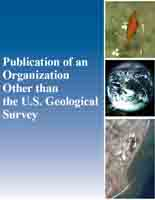Use of small spots (≤20µm) for laser ablation-inductively coupled plasma-mass spectrometry (LA-ICP-MS) U-Pb zircon geochronology is of increasing interest in the Earth sciences because the temporal record of geologic processes is often preserved on a fine-scale within zircon grains. However the systematic biases and external sources of uncertainity of U-Pb ages is poorly defined when measured on small spots by LA-ICP-single-collector-sector-field (SF)-MS instrumentation. This study addresses the accuracy and precision for small spots and specifically the extent to which short ablation times limit Pb/U Down-Hole Fractionation (DHF), which largely controls the accuracy of the U-Pb ages. Six zircon reference materials (91500, FC-1, R33, Temora 2, Plešovice and Fish Canyon Tuff) were measured on spot sizes of 20, 15, 10 and 7 µm diameter. Laser fluence was increased from 3 to 6 J/cm2 with decreasing spot size to compensate partially for decreasing U and Pb signals. 91500 zircon was the calibration reference material. Raw count rate data were processed using Iolite version 3.63 software with the U-Pb Common Approach data reduction scheme and smoothed cubic spline DHF correction model. Samples were ablated for 30 seconds and results processed for the first 28, 15, 10 and 7 seconds of ablation (masking the initial 2 seconds) in order to assess the accuracy and precision of U-Pb ages as a function of ablation time. Measured 206Pb/238U ratios for the six zircon reference materials increase steadily with ablation time, reflecting DHF, but exhibit somewhat different patterns of increase for different zircons, producing the major source of uncertainty for the U-Pb ages. A secondary source of uncertainty is differences between the 206Pb/238U (normalized to their accepted values) for different zircons near the start of ablation, which may reflect matrix-dependent instrumental mass bias in the ICP. Nonetheless, processing data from only the first 10 to 15 seconds of ablation (50 to 75 laser pulses) restricts the extent of DHF and time-resolved Pb/U variations between different zircons to a sufficient degree to give concordant U-Pb ages on 20 to 7 µm spots that are accurate and precise to better than 1.4% using LA-ICP-single-collector-SF-MS instrumentation.


